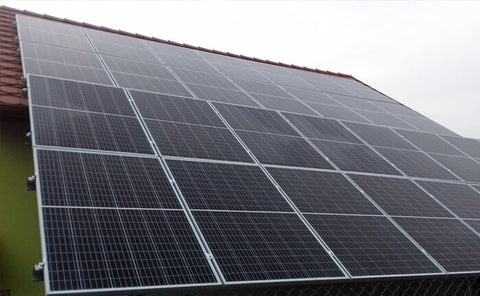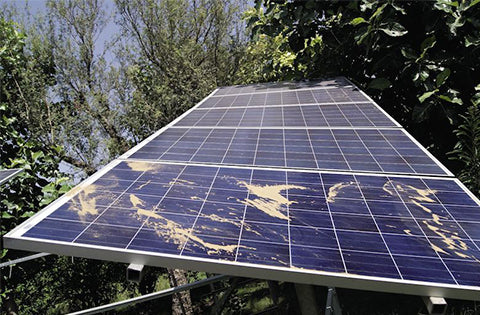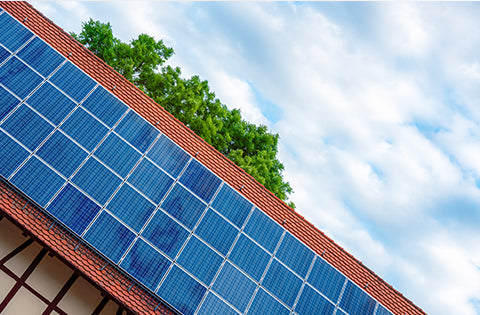"Hot spot effect" is a common problem of photovoltaic panels (PV modules), which will not only affect the appearance, but also bring potential hidden dangers and hazards to the normal operation of PV modules. In order to better prevent and eliminate such phenomena, we need to have a clear understanding of the "hot spot effect" and understand its occurrence mechanism, so as to better deal with the "hot spot effect". Generally speaking, in a series circuit, the working state of the battery is inconsistent due to some reasons. These reasons include shading (such as shadows of surrounding objects, fallen leaves, bird droppings, etc.) that causes the performance of some batteries to be different from that of other batteries, or the performance of the batteries themselves to be different (in serious cases, some batteries have obvious defects).

In practical applications, the possibility of completely consistent performance between batteries is very small. Therefore, in a strict sense, the hot spot effect is a normal phenomenon. We need to treat it correctly. In addition, according to a large amount of data accumulation and data investigation by authoritative testing institutions, when the irradiance is greater than 800w/m2, it is acceptable that the temperature difference between the maximum temperature of hot spot and the average temperature of components is less than 10 degrees; If the temperature difference of a few components exceeds 10 ℃, it is acceptable as long as the ratio is not more than 5% and the system power output is normal (for example, there is bird droppings with a diameter of 3-125px on the components, there is dust accumulation on the edges of the components, slight welding problems, slight defects on the battery, dirty glass on the cover plate, etc.).
It is generally believed that "hot spot effect" is caused by shading and battery performance defects, which has basically formed a consensus. However, everything should not be too absolute. Research shows that even if there are shadow shading or battery performance defects, some circuit batteries do not necessarily lead to load, and hot spot effect does not necessarily occur. It depends on the working state of the battery. Even if the hot spot effect occurs, its severity is also related to several factors. For example, the system will only lose part of its power due to the obstruction of bird droppings. In order to avoid excessive reverse bias voltage, the current crystalline silicon modules generally have two or three diodes in parallel to prevent the battery chip with hot spots from overheating, because it is rare for the hot spots to overheat or even cause a fire, In this case, the performance of some batteries has serious defects, resulting in excessive local current.

To sum up, we need to deal with the "hot spot effect": first, purchase qualified photovoltaic modules to reduce the probability of performance defects of individual modules; Second, pay attention to remove the impurities inside the battery, reasonably regulate the current, and adopt parallel diode protection; Third, strengthen daily inspection and maintenance, timely remove fallen leaves, dust and other impurities on PV modules, and ensure normal power generation efficiency. By doing so, the "hot spot effect" will be effectively controlled, the power generation efficiency will be maximized, and the overall economic efficiency will be significantly improved.
Pay attention to SOLARPARTS to know more:
Phone: +86-13923729619 Fax: +86-755-28720791
WhatsApp: +86-13923729619 Wechat: 13510027129
Email address: Philip@isolarparts.com
Homepage: www.isolarparts.com



